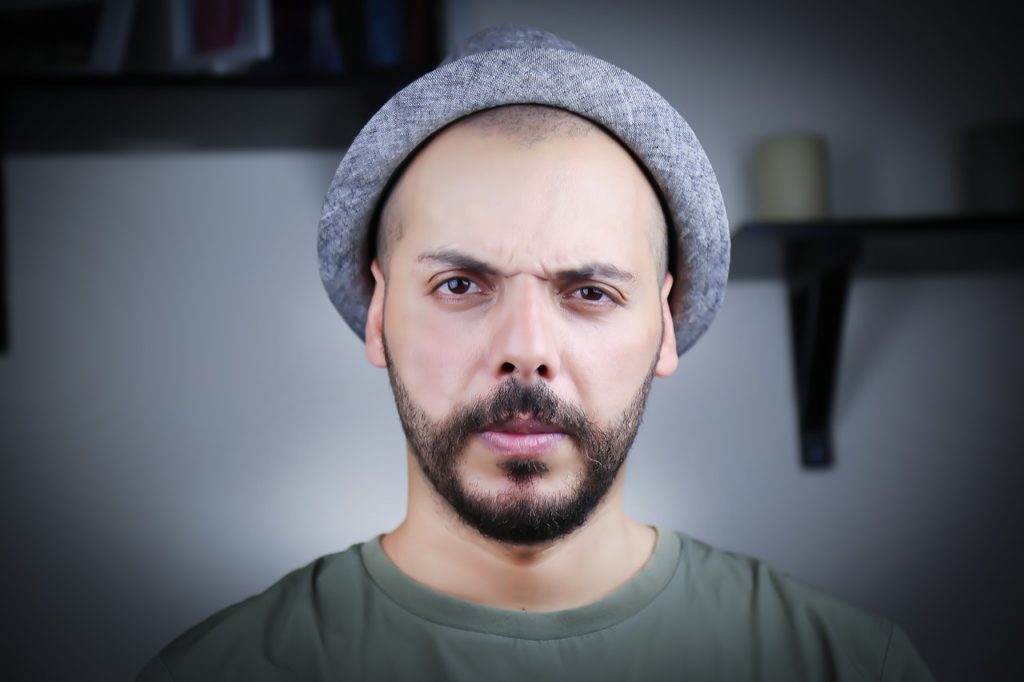If you’re one of the millions of Americans who suffers from premature hair loss and balding, you’re probably looking for a way to slow down the rate of hair loss and possibly even reverse the effects. Are there any good options? Or are they all marketing hype?
Hair Loss in America
We’ve got some bad news and some good news.
The bad news is that hair loss is extremely common. The good news is that you’re not alone. (Though that latter point probably won’t provide too much comfort.)
Data curated by The Hair Society reveals that 35 million men and 21 million women suffer from hair loss. Approximately 40 percent of men above the age of 35 have some degree of hair loss. By age 80, that number includes 70 percent of all men. Roughly 3 out of 5 women will experience some level of thinning or balding by age 60.
In other words, hair loss is a fairly natural part of the aging process. But that doesn’t mean you have to sit back and deal with it. There are ways to regrow hair and/or prevent additional hair loss. The key is finding the right treatment options.
Finding Hair Loss Treatments That Work
Because of the massive market of hair loss sufferers, there’s constant innovation and research in the field of hair loss. This leads to tons of innovation – some of which is good and some of which is ineffective. Here’s a look at some of the hair loss treatments that actually work:
1. Laser Caps
Low level laser therapy (LLLT), also known as cold laser therapy or red light therapy, irradiates photons into scalp tissues. These photons are then absorbed by weaker cells to encourage hair growth. In simpler terms, the medical-grade low level laser light increases blood flow and re-energizes hair follicles to encourage them to regrow hair.
If that sounds like an expensive or complicated procedure, you may be surprised to learn that it’s actually quite affordable – and can be done in the comfort of your own home with no need for medical supervision.
LLLT is most commonly administered through laser caps. These are caps that you place on your head for roughly 30 minutes per day. And over a series of weeks and months, they halt hair loss and encourage regrowth. You can read laser cap reviews to see some of the results others are getting.
2. Minoxidil
“This is the only over-the-counter medication for hair loss approved by the FDA for use by both men and women,” WebMD explains. “It won’t rescue a receding hairline. It does stimulate hair growth, although scientists aren’t quite sure how it works.”
That sounds a little sketchy, but minoxidil is proven to work and has a long track record of being safe. You’re probably most familiar with it under the name Rogaine, though it has some generic forms, as well (like theroxidil).
WebMD reports that minoxidil works for roughly two out of three men and is most effective in those under the age of 40 who just recently started losing hair. It’s applied twice per day and takes up to four months to begin showing results. Minoxidil won’t cure baldness, but it does stop hair loss.
3. Finasteride
Another medication is finasteride. This works to stop your body from producing the hormone that causes male pattern baldness (dihydrotesterone or DHT). It’s found under the brand name Propecia.
WebMD claims Finasteride slows or stops hair loss in 90 percent of men. Plus, the best part is that two out of three men regrow some hair. It comes in a pill form and only needs to be taken once per day. If you want to put on a “full court press,” talk to your doctor about combining finasteride with minoxidil.
Finasteride can cause some unwanted side effects, like erectile dysfunction. However, these rare side effects will clear up once you stop taking the drug.
Regain the Hair of Your Youth
While you’ll never return to that shaggy-haired kid from high school, you don’t have to live the rest of your life with a receding hairline and thinning crown. With the treatments highlighted in this article, you should be able to regrow hair and continue to look young well into your upper years.
About Post Author
You may also like
-
Do I Still Have to Pay Child Support If I Lose My Job?
-
Increasing Your Chances: How a Lawyer Helps You Win Social Security Disability Benefits
-
Legally Untangling Hearts: The Compassionate Guidance of Divorce Attorneys
-
5 Compelling Reasons Why This Yoga App Stretches Beyond the Competition
-
Taylor Benefits Insurance Company Culture: The Hidden Influence Behind Startup Success and Failure
